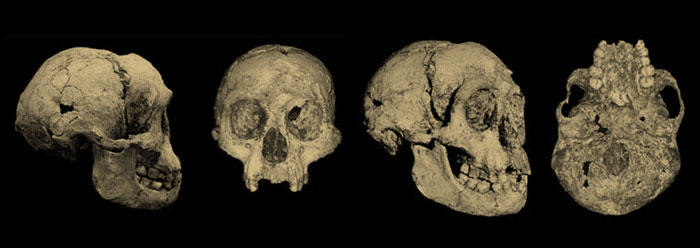
First Draft of the Neandertal Genome Sequence Released
by Jeffrey Tomkins, Ph.D.*
The highly anticipated initial draft assembly of the Neandertal genome was announced at the Annual Meeting of the American Association for the Advancement of Science (AAAS) in the United States and at a European press conference.1 This genomic milestone involves approximately 3 billion bases of ancient human (Neandertal) DNA sequenced so far, which is the same amount of DNA contained in one set of human chromosomes or a single genome coverage. This is a major event in the booming scientific field referred to as “paleogenomics,” a discipline that studies ancient DNA and is providing exciting new evidence in support of the recent creation model.
The Neandertal DNA was obtained from bone fragments using advanced isolation techniques developed specifically to remove contamination and alleviate DNA damage associated with ancient DNA. In addition, “next generation” sequencing technology involving new chemistry and instrumentation was used to rapidly produce considerably more DNA sequence data per laboratory run than previous technologies.
The effort to produce an initial 3 billion bases of DNA for the Neandertal genome was led by Dr. Svaante Paabo of the Institute for Anthropology at the Max Planck Research Institute in Germany. It should be noted that future Neandertal sequencing promises to increase the accuracy of the overall DNA sequence, as well as fill in gaps found in the current “rough draft” sequence. All of the DNA sequence will be placed in the public domain (web-based databases) for researchers around the world to freely query, download, and analyze. In fact, researchers at ICR will be using the Neandertal DNA sequence in a variety of research projects investigating the role of the human genome in the creation model.
Evolutionists consider modern humans and Neandertals to be two distinct human species that separated from each other 35,000 to 800,000 years ago. However, within the recent creation perspective, Neandertals and modern humans are not really separate “species,” but represent different human gene pools in time and location.
Consistent with this idea, the genomes are proving to be quite similar. In fact, preliminary findings over the past couple of years support this interpretation, as a variety of genes have been characterized in the Neandertal genome with high similarity to modern human genes. These genes are associated with such traits as pale skin and red hair, type O blood, and high levels of linguistic and mental ability.2, 3, 4 Since evolutionary scientists considered these gene variants to be strictly associated with modern humans, it comes as no surprise that the evidence will once again force “re-explanations.”
The Neandertals essentially represented a unique ethnic group that is now gone due to the same factors that affect modern human populations—factors such as migration, mutation, and interbreeding. Neandertals represent a variant genome from within the created human kind. We predict that future analysis of Neandertal DNA sequence data will add confirmation to creation, but consternation to other origins models.
References
- Pennisi, E. 2009. Neandertal Genomics: Tales of a Prehistoric Human Genome. Science. 323 (5916): 866-871.
- Culotta, E. 2007. Ancient DNA Reveals Neandertals With Red Hair, Fair Complexions. Science. 318 (5850): 546-547.
- Lalueza-Fox, C. et al. 2008. Genetic characterization of the ABO blood group in Neandertals. BMC Evolutionary Biology. 8: 342.
- Krause, J. et al. 2007. The Derived FOXP2 Variant of Modern Humans Was Shared with Neandertals. Current Biology. 17 (21): 1908-1912.
* Dr. Tomkins is Research Associate.
Article posted on March 4, 2009.
This article was originally published March, 2009. "First Draft of the Neandertal Genome Sequence Released", Institute for Creation Research, http://www.icr.org/article/first-draft-neandertal-genome-sequence-released (accessed March 11, 2009).
Want to use this article? View our Ethical Use Policy. To receive more articles from ICR, signup for a free subscription to our online and print publications.